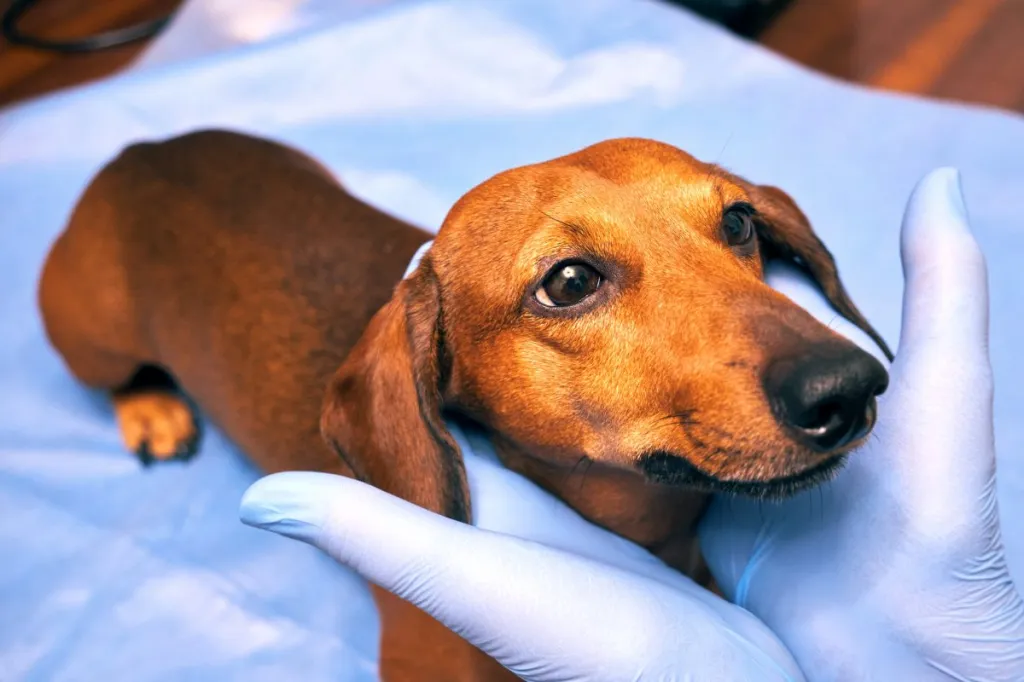Jaundice in dogs refers to a buildup of yellow pigment in the blood and tissue, which causes a yellow discoloration in the skin, gums, and eyes. This is also called icterus or yellow jaundice. It’s fairly easy to spot in dogs, though it may be more difficult to see on darker dogs than dogs with light fur or skin. Here’s what you should know about the symptoms, causes, and treatments for jaundice in dogs.
Symptoms of jaundice in dogs
The most obvious symptom of jaundice in dogs is a yellow discoloring of the eyes, gums, or skin, especially on the ear flaps.
The buildup of bilirubin in the blood that causes this is toxic and affects the liver, kidney, and brain tissue. That’s why you will likely see other symptoms along with the discoloration.
Here are a few of the symptoms you might expect to appear in dogs who suffer from jaundice:
- Discolored urine
- Increased thirst or urination
- Vomiting
- Diarrhea
- Loss of appetite
- Lethargy
- Weakness
- Paleness
- Fever
- Abdominal pain
- Orange tint to feces
- Weight loss
- Bleeding
- Confusion
Causes of jaundice in dogs
Jaundice in dogs is caused by bilirubin, a pigment in bile produced by red blood cells. Normally this pigment is excreted, but if too much bilirubin is produced or if the dog’s body can’t excrete it fast enough, there is an accumulation that results in jaundice. Many conditions can affect this process in dogs. There are many possible underlying causes of jaundice in dogs.
Anything that disrupts the red blood cells’ ability to produce the right amount of bilirubin or the body’s ability to excrete bilirubin can cause a buildup of pigment. Diseases that destroy red blood cells are often responsible for the condition.
Here are a few conditions that might cause jaundice in dogs:
- Autoimmune disease
- Cancerous tumors
- Heartworm
- Cirrhosis or liver damage, often from toxins
- Pancreatic inflammation, stones, cancer, or infection
- Bile duct obstruction
- Injury
- Collection of blood in the body cavity
- Incompatible blood transfusion
Treatments for jaundice in dogs
The treatment for jaundice in dogs is dependent on treatment for the underlying cause of the condition. This is because it is a symptom of other conditions and not a disease on its own. A vet will be able to run tests to determine a proper diagnosis for the underlying condition and form a treatment plan.
In cases of cancer, chemotherapy may be used to reduce the size of tumors, as well as surgery to remove affected tissue. Liver disease may be treated with a variety of medications that can reduce inflammation and scarring. Surgery may be needed if there is an obstruction in the bile duct. In severely anemic dogs, a blood transfusion may be necessary.
In many cases, a vet will prescribe a special, nutritionally balanced diet with vitamin supplements based on the underlying disease.
It’s important to follow your vet’s instructions for proper healing and recovery. Never attempt to adjust medication dosage without a vet’s approval, as this can worsen conditions, especially liver complications, or cause other conditions in your dog.









